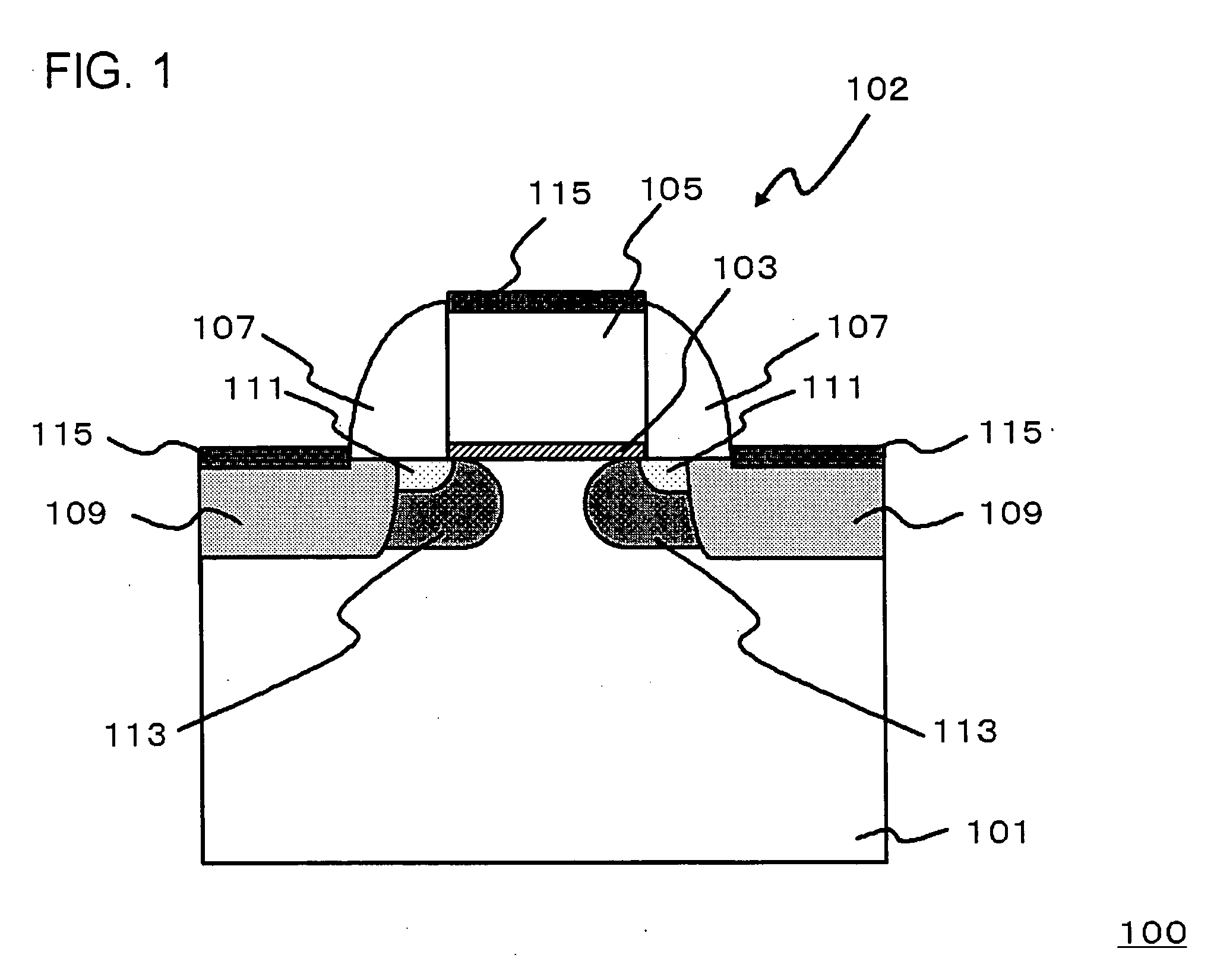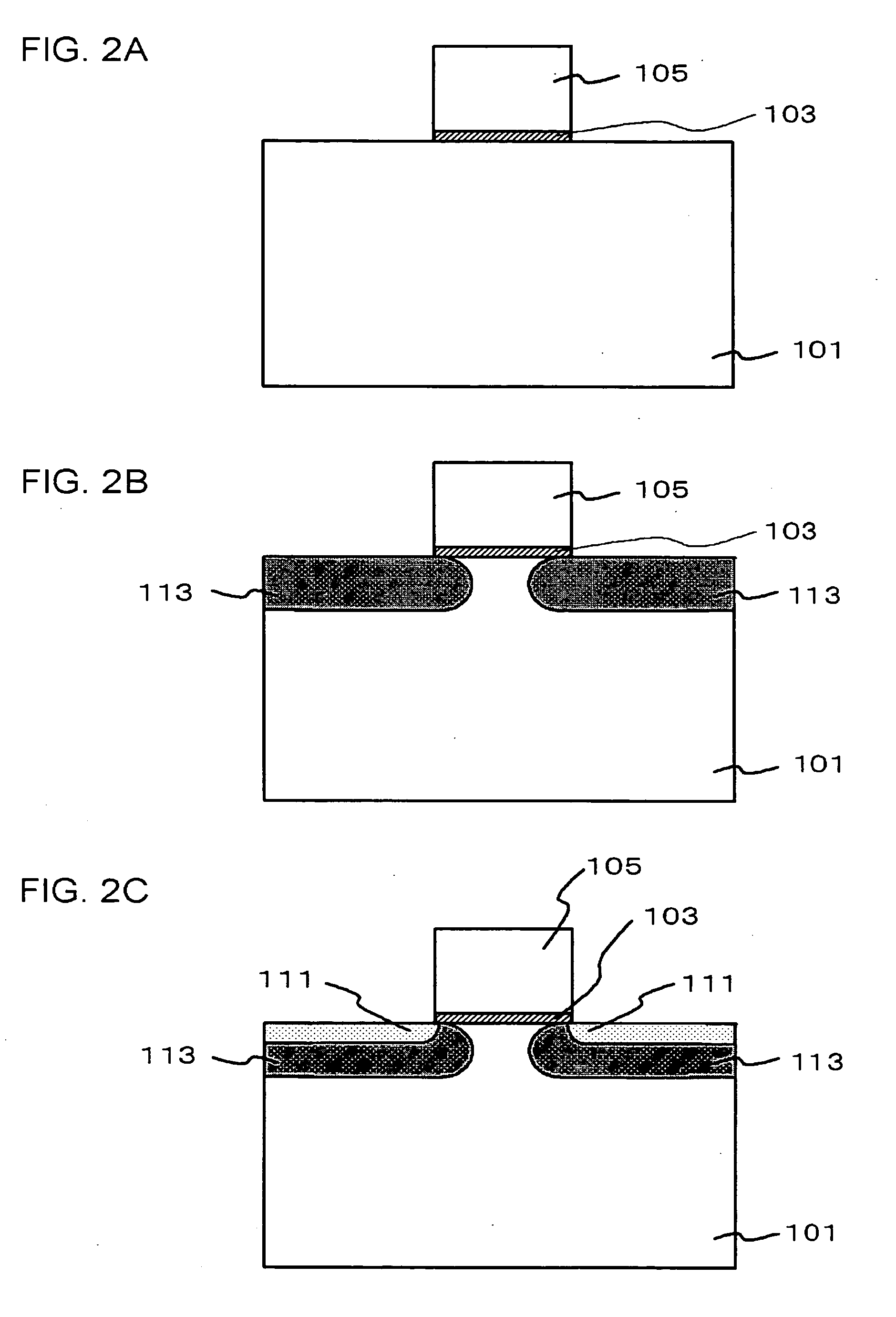Method for manufacturing field effect transistor
a field effect transistor and manufacturing method technology, applied in the direction of basic electric elements, electrical appliances, semiconductor devices, etc., to achieve the effects of improving characteristics, reducing threshold voltage, and enhancing diffusion of impurities
- Summary
- Abstract
- Description
- Claims
- Application Information
AI Technical Summary
Benefits of technology
Problems solved by technology
Method used
Image
Examples
example 1
[0077] A p-type MOSFET 104 was manufactured via the procedure shown in FIG. 4. In step 103 and step 105 of FIG. 4, the highest available temperature of the surface of the silicon substrate 101 was set to 1,300 degree C. Here, in this example and the following examples, the heating temperature during the formation of the side wall insulating film 107 was 700 degree C. In addition, in the spike RTA of step 106, a heating rate was set to 250 degree C. / sec., and highest available temperature of the surface of the silicon substrate 101 was set to 1,050 degree C.
example 2
[0078] A p-type MOSFET was manufactured by a process, in which the annealing processes of step 103 and step 105 were substituted with the FLA processes in the procedure shown in FIG. 4 to conduct a spike RTA process. The highest available temperature in the spike RTA was set to 1,300 degree C.
[0079] (Analysis 1)
[0080] The relationship of the gate length (nm) with the threshold electrical voltage (V) was investigated for the p-type MOSFETs obtained in the example 1 and the example 2. As a result thereof, FIG. 8 is a graph, showing a relationship of the gate length (nm) with the threshold voltage (V) of the p-type MOSFET. According to FIG. 8, in the case of the p-type MOSFET 104 obtained in example 1, the threshold voltage characteristics could be considerably improved by including the FLA process as the defect-eliminating process, as compared with the p-type MOSFET obtained in example 2.
[0081] Next, the n-type MOSFET 102 in the semiconductor device 100 described in the first embod...
example 3
[0082] A n-type MOSFET 102 was manufactured by the procedure shown in FIG. 4. In step 103 and step 105 of FIG. 4, the highest available temperature of the surface of the silicon substrate 101 was set to 1,300 degree C. Here, in this example and the following examples, the heating temperature during the formation of the side wall insulating film 107 was 700 degree C. In addition, in the spike RTA of step 106, a heating rate was 250 degree C. / sec., and highest available temperature of the surface of the silicon substrate 101 was 1,050 degree C.
PUM
 Login to View More
Login to View More Abstract
Description
Claims
Application Information
 Login to View More
Login to View More - R&D
- Intellectual Property
- Life Sciences
- Materials
- Tech Scout
- Unparalleled Data Quality
- Higher Quality Content
- 60% Fewer Hallucinations
Browse by: Latest US Patents, China's latest patents, Technical Efficacy Thesaurus, Application Domain, Technology Topic, Popular Technical Reports.
© 2025 PatSnap. All rights reserved.Legal|Privacy policy|Modern Slavery Act Transparency Statement|Sitemap|About US| Contact US: help@patsnap.com



